Specific Process Knowledge/Lithography/EBeamLithography/EBLProcessExamples: Difference between revisions
| Line 27: | Line 27: | ||
'''RESIST 300''' | '''RESIST 300''' | ||
'''SHOT A, 800''' | '''SHOT A, 800''' | ||
Revision as of 16:04, 22 May 2024
This page is under construction. In time we will fill it with relevant process examples and relevant data.
Mix-and-match with EBL and UV lithography
Using mix-and-match it is possible to combine EBL and UV lithography using selected resists. Read more on the Mix-and-match page.
Circle arrays by single spot EBL on JEOL 9500
Arrays of circular holes can be created by normal area writing of a mask of circular structures, this is illustrated in the left side of the figure below. In this case the drawn circles are filled with beam shots, just like for any other area based exposure. For large arrays this can however be quite slow and hence it can be faster to write circles with local overexposure of single beam shots, i.e. a setup where the beam is pitched at the required circle pitch and the beam dwells at each site to produce a circle of the required size. In this approach dwell times will typically be in the order of several 100 ns to a few µs.
The single shot approach is illustrated in the center and right parts of the figure below as there are two ways to go about this.
- Big box approach: This approach is illustrated in the center of the figure below. The mask is a single box of the desired size of the array. The beam is then pitched with the SHOT x, n command where n determines the beam pitch and hence the pitch of the resulting circles. The size of the resulting circles is determined by the dwell time.
- Small box approach: This is illustrated on the right side of the figure. In this approach each circle is represented by a small 2x2 nm box, hence the pattern is an array of these small boxes and the beam pitch is set higher than the size of the box to produce a single beam shot in each box. Again, the size of the resulting circles is determined by the dwell time.
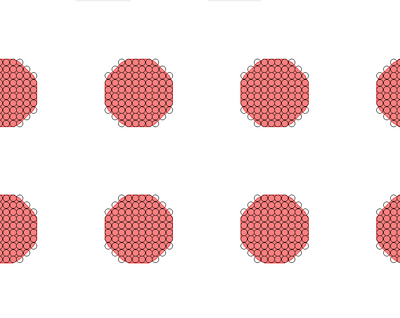 |
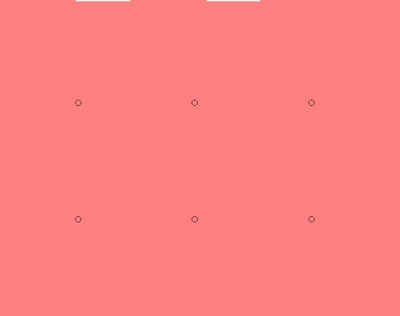 |
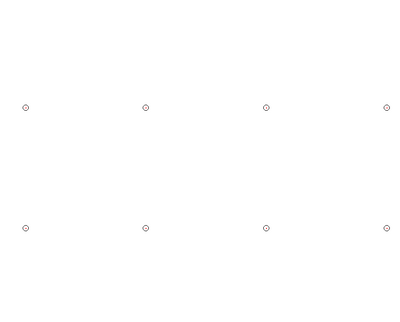
|
|
Example of the three different approaches for exposing arrays of circles. In all cases the red areas are the areas drawn in the mask file. The small circles indicate beam positions. | ||
SHOT mode
For both of the single shot approaches the SHOT mode defined in the SDF file should be SHOT S, rather than the normal SHOT A.
SHOT A mode is used with the RESIST command to define an area dose in µC/cm2 and the beam pitch in 1/4 nm steps. The following will for instance define an area dose of 300 µC/cm2 and a beam pitch of 200 nm:
RESIST 300
SHOT A, 800
As the number of beam shots in a certain area scales with the shot pitch, the dwell time is in this way determined by the combination of area dose and beam pitch. If one changes the pitch, the dwell time and hence circle size will also change. One can decouple this relation by using SHOT S mode instead. In SHOT S mode the user defines the actual dwell time and hence in SHOT S mode the RESIST command is ignored. In SHOT S mode the user can thus define the dwell time and beam pitch independently.
SHOT S takes three arguments as SHOT S, t1, t2, s where t1 is area dwell time in ns, t2 is line dwell time (not applicable to JEOL 9500) and s is shot pitch in 1/4 nm steps. The following example will set a dwell time of 550 ns and a beam pitch of 150 nm:
SHOT S, 550, 0, 600
Big box approach
Small box approach
Results
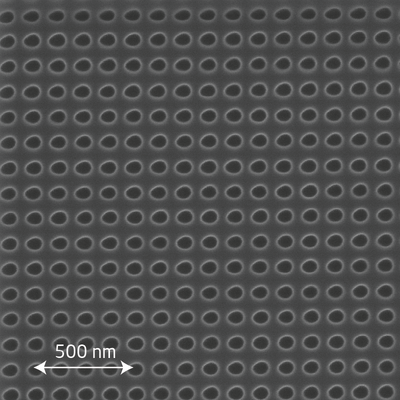
|
|
Example of circle array created with the single shot approach. |
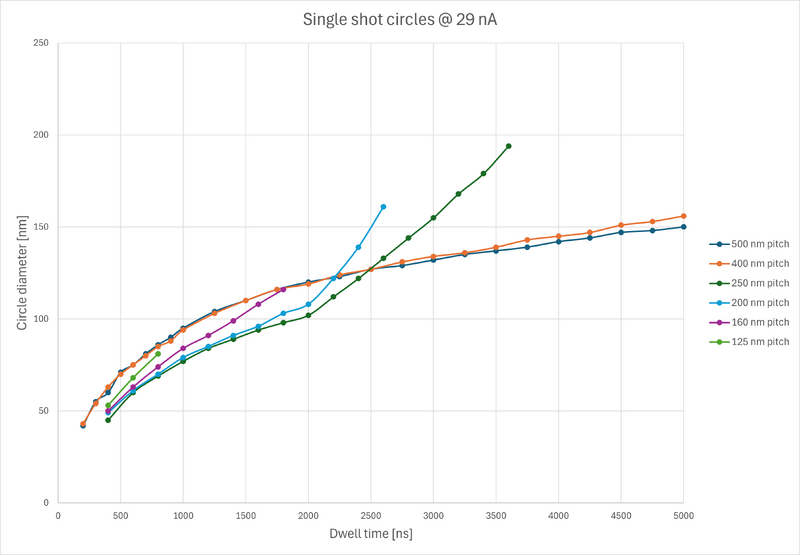
|
|
Circle size as a function of pitch and dwell time for exposure at 29 nA. |
You can read more about this method in the linked article.
Single-spot e-beam lithography for defining large arrays of nano-holes
Article on quality control on the JEOL 9500 system
Quality control of JEOL JBX-9500FSZ lithography system in a multi-user laboratory